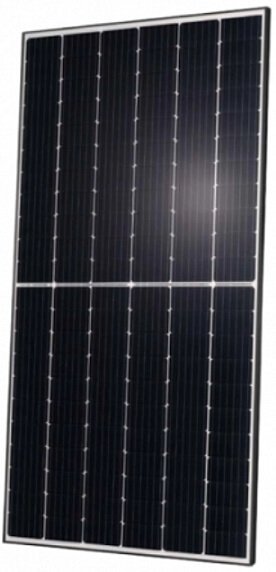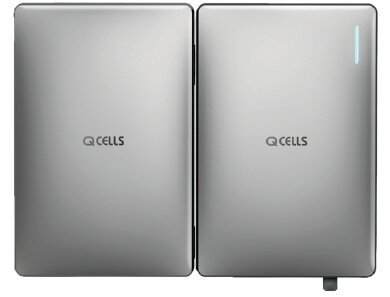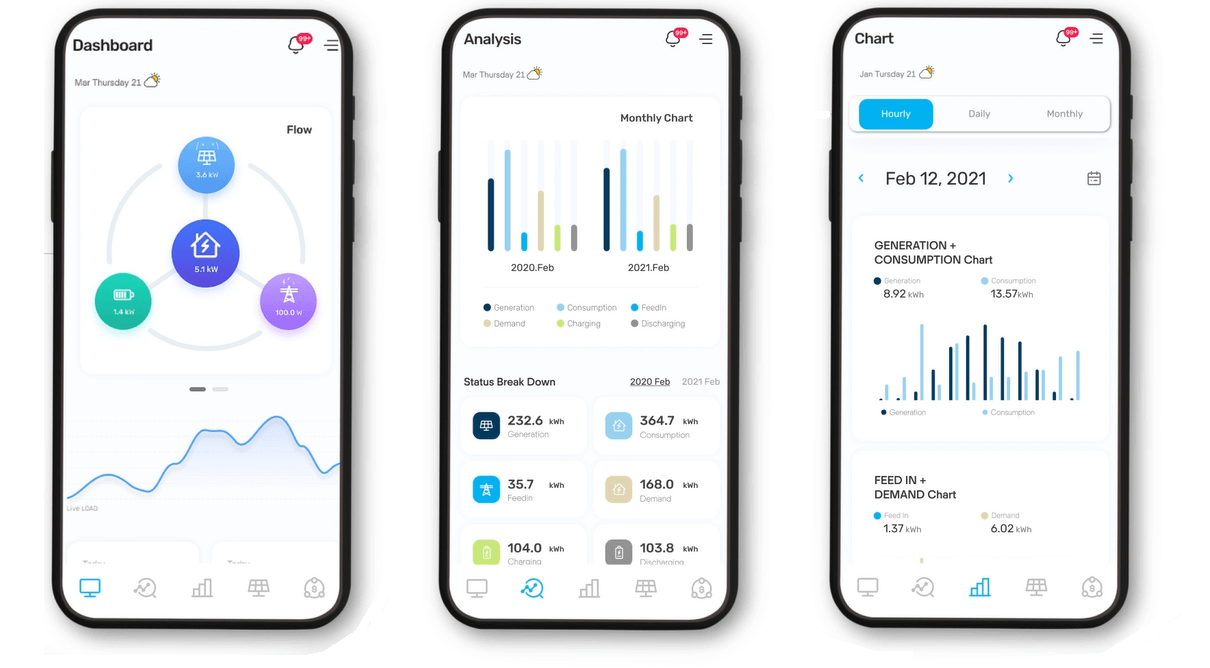Q cells Solar and battery review
home > solar panels > best solar panels review > Q CELLS Solar and Battery Review
Q cells Solar and Battery Overview
Q Cells was initially a German solar company but is now based in Seoul, South Korea, and is well known for manufacturing quality solar panels built on proven solar cell technology. While the company is not known for producing the most efficient panels, they are generally very reliable and have scored consistently well in the independent testing from PVEL. Q Cells also supplies several home energy storage systems built on a unique modular design and recently released a slick new Q.Home CORE series with built-in instantaneous backup power.
Q Cells Solar Panels Quick Summary
Power ratings (Watts): 335W - 590W
Panel Efficiency %: High - 19.8% - 21.4%
Cell technology: P-type, high-density cells
Price bracket: Med $$$$
Most popular panel: Q.Peak DUO G9 390W
Product Warranty: Standard - 12 years or High 25 years
Service and support: Very good 4/5
Overall: Recommended ☆☆☆☆☆
Company History
Hanwha Q Cells, more commonly known as Q Cells, is a large multinational company headquartered in Seoul, South Korea. Q Cells was originally a German solar company established in 1999 but was acquired by Hanwha Group, a large South Korean Chemical company in 2012. The primary research and development centre remains in Germany and the company operates manufacturing facilities in Malaysia, China, South Korea and the US. Q Cells is generally well regarded in the solar world and is one of several industry leaders in innovation and advanced manufacturing technology.
Performance & Reliability
PVEL scorecard overall results 2014-2020
Q Cells panels are generally rated as mid to high in regards to performance, quality and reliability. Over the last four years, Q Cells panels have ranked as some of the top-rated solar panels in the 'PV Module Reliability Scorecard Report' by leading independent solar module testing and performance services PVEL, in association with DNV-GL. A top performer means they are among the highest performing modules in the group with no severe degradation or sign of failure through the four rigorous testing regimes. Q Cells were also the first manufacturer to pass the more stringent TÜV Rheinland ‘Quality Controlled PV certification’ in early 2020 and stated this would become its official certification standard for its new generation Q.PEAK DUO-G9+ panels.
Range of Solar panels
Q Cells produce a wide range of solar panels designed for residential, commercial and utility-scale applications. Like most large volume manufacturers, Q Cells has boosted efficiency across its range by incorporating Mono PERC half-cut cells with multi-busbars (MBB) on all new generation panels. To further increase efficiency on the new G9 and G10 range, Q Cells has moved to a high-density cell format which eliminates the vertical gaps between the cells and in-turn increases cell surface area across the panel.
Q cells Residential Panels
The most popular panels from Q Cells consist of the G9 range available in sizes from 375W to 395W, and the recently released larger G10 range, available in sizes from 400W to 415W. These next-generation panels use the latest high-density Zcell technology combined with 12 busbars on half-cut cells to achieve maximum efficiency of 21.4%.
The Q Cells G9+ and G10+ (plus) variation panels incorporate the same high-density multi-busbars (12BB) cell technology but also come with a higher 25-year product and performance warranty. Q Cells panels also feature a high-tech aluminium alloy frame which is certified for high snow (5400 Pa) and wind loads (4000 Pa).
Q.Peak DUO G5 - up to 335W
Q.Peak DUO G6 - up to 355W
Q.Peak DUO G7 - up to 335W
Q.Peak DUO G8 - up to 360W
Q.Peak DUO ML-G9 - up to 395W
Q.Peak DUO ML-G10 - up to 415W
Click the links above to download the Q Cells datasheets
Q cells Commercial Panels
The latest Q.Peak DUO XL (extra-large) G9, G10 and G11 series panels use the same next-generation mono PERC half-cut cells incorporating multi-busbars (12BB) in the larger 132 cell and 156 cell formats designed for commercial and utility-scale systems. The larger size panels boost efficiency up to 21.7% and are available in power ratings up to 490W in the G10 range, while the extra-extra-large (2.4m long) G11 series reaches an impressive 590W.
Q.Peak DUO L-G8 - up to 430W
Q.Peak DUO XL-G9.2 - up to 465W
Q.Peak DUO XL-G9.2 - up to 465W
Q.Peak DUO XL-G10.2 - up to 490W
Q.Peak DUO XL-G11.2 - up to 590W
Q.Peak DUO XL-G11.3 Bifacial - up to 580W
Q cells G9 series
Two years ago, Q Cells released the new G9 series which are the most advanced panels developed by the Korean and German R&D teams and feature a range of cell improvements to boost panel efficiency above 21%. The new cell architecture, which Q cells refers to as Q.antum DUO Z technology, consists of half-cut monocrystalline PERC cells with 12 micro busbars built into a new high-density panel format. The high-density cells eliminate the vertical gaps between the cells to increase cell surface area and in turn increase efficiency and performance.
The new G9 series from Q cells feature many new cell advancements - Image credit Q cells
As explained in the warranty section below, the product Warranty on the premium G9+ series is 25 years while the standard G9 series have a 12-year product warranty.
Q Cells Solar Panel Warranty
Q Cells offer an industry-standard 12-year product warranty and a 25-year performance warranty on most panels. However, the panel’s warranty increases from 12 to 25 years on the G9+ and G10+ (plus) panels available in the Australian market.
The warranty document for the G9+ and G10+ panels can be downloaded here
25 years limited product Warranty - “For material defects or processing defects, Hot-Spot Protect and Anti PID Technology.”
25 years limited linear performance warranty2 - “At least 98 % of the nominal power within the first year. Thereafter, decrease of the power output will not exceed 0.50 % p. a. Minimal nominal rated power after 25 years at least 86%”
The Australian warranty document for the G9+ & G10+ series panels can be downloaded here
25 years limited product Warranty - “For material defects or processing defects, Hot-Spot Protect and Anti PID Technology.”
25 years limited linear performance warranty2 - “At least 98 % of the nominal power within the first year. Thereafter, decrease of the power output will not exceed 0.50 % p. a. Minimal nominal rated power after 25 years at least 86 %”
Q cells Home Battery Systems
Q Cells CORE H5S Battery Quick Summary
System size: Scalable, 6.8kWh, 13.7kWh or 20.5kWh
Battery size: 6.86kWh per module with 95% usable capacity
Power output: 3.3kW continuous per module (5kW inverter)
Backup power: 5kW Instantaneous (with 2 batteries)
Type: DC battery system and hybrid inverter
Cell technology: Samsung SDI lithium cells
Price: $4500 (AU) per battery module (TBA)
Cycle life: up to 6000 cycles (claimed)
Product Warranty: Very high - 15 years
Compatibility: Q Cells Q.Home hybrid inverter only
Overall: Recommended ☆☆☆☆☆
Like Q Cells, several other solar panel manufacturers have branched into the home battery storage market with various levels of success. Q Cells has been more successful than most and recently released the third-generation Q.Home energy storage systems in Australia. The new system, available in two variants called the Q.Home CORE H5S and A5S, are a new and improved version of the blue Q.Home HYB-G2. The previous light blue coloured Q.Home HYB-G2 energy storage system was first released in 2018. However, in the US, the original G1 series is the only option available and is repackaged version of the well known Solax hybrid inverter and Triple Power battery system.
New Q.Home CORE H5S Battery System
The new more powerful Q Cells Q.Home CORE H5 battery system
The new third-generation home battery system from Qcells features a much more aesthetic look and appears to be a completely redesigned version of the previous Q.Home G2 system. The new Q.Home Core H5S system also uses high voltage (HV) batteries connected in horizontal format but the battery capacity has been increased to 6.8kWh with 95% usable. Up to three of the higher capacity batteries can be connected to provide up to 20.5kWh of storage which is more than enough for most residential households. It is not known exactly what cell chemistry is being utilised but considering the new system now has a 15-year warranty we assume they are using new high-performance Samsung SDI cells. On the solar side, the new Q.VOLT hybrid inverter is more powerful with a higher 5kW power rating and up to 8kW of solar input, along with a wider MPPT operating voltage range allowing more solar panels to be connected (4kW per MPPT). The new inverter also features instantaneous backup with 0.1 second changeover time making it function much like a UPS system. However, the full 5kW backup power is only available with 2 or more batteries installed or when solar (PV) is connected and operating during the day. Backup power is reduced slightly to 3.3kW with one battery connected.
Download the full Q Cells Q.Home CORE H5S specification datasheet.
New Retrofit Q.Home CORE A5S battery
For the first time, Q Cells has released an AC-coupled battery system for retrofitting a battery to homes with an existing solar system. The AC version, called the Q.Home Core A5S, is virtually identical to the H5S version but does not have any solar connections. It uses the same 6.86kWh battery modules and features the same backup power rating with a 0.1 second changeover time. Download the full Q Cells Q.Home CORE A5 specification datasheet.
Q.Home HYB-G2 Battery System
The older second-generation Q.Home ESS HYB G2 home solar battery system from Q cells
The Q.Home G2 hybrid solar system uses high voltage (HV) batteries assembled in a unique horizontal layout, as opposed to the more common vertically stacked batteries. Each battery has a total capacity of 4.0kWh with 90% usable or 3.6kWh. The unique modular design hides the cable interconnections and is able to be expanded to a maximum capacity of 12kWh using three battery modules.
Q cells opted to use the high-performance Samsung cells in the G2 battery. Samsung is one of the world’s leading battery manufacturers and uses Lithium NMC prismatic cells which claim to have a design life of 6000 cycles or around 15 years. The Q.Home HYB G2 hybrid solar inverter is rated at 4.6kW and can handle up to 6.6kW of solar with a high 15A input MPPT current rating which is suitable for the latest high powered panels. It also features an integrated backup power function that provides 3kW of continuous output and 4.6kW peak power, although the backup time takes up to 30 seconds, so it does not function as an uninterruptable power supply (UPS). Download the full Q.Home ESS HYB-G2 specifications datasheet.
Q.Home ESS HYB-G1 - USA Only
Q.Home HYB-G1 hybrid inverter and battery - US market only (split phase)
Due to the different regulations and split-phase requirements in North America, Q Cells only offers the first generation Q.Home ESS HYB-G1 energy storage system built on the well-known Solax hybrid inverter platform and coupled with Triple X modular battery system. This more powerful system, available in sizes from 6.0kW to 8.6kW, is better suited to the higher power requirements of larger US homes with the larger version featuring 4 x MPPTs which can handle up to 10.3kW of solar.
The backup power ratings are also higher ranging from 6.0kW to 7.5kW. Battery capacity is scalable starting from either 4.5kWh or 6.3kWh of usable capacity per module; with up to three modules in series for a maximum capacity of 18.9kWh which is more than enough for an average household. Download the full Q.Home ESS HYB-G1 Specifications datasheet.
Q Cells CORE 15-Year Battery Warranty
The industry-standard warranty for battery systems is 10-years, however, Q Cells is one of the first manufacturers to offer an extended 15-year performance warranty on the new CORE H5S and A5S energy storage systems. The battery warranty document details the expected degradation (loss of capacity) which permits a battery SOH (state of health) of 60% after 15 years. The other condition is the energy throughput which accounts for degradation based on one charge & discharge cycle per day. Battery degradation of 3 to 4% per year is normal and many other leading battery manufacturers have similar degradation rates after 10 years. Learn more in our detailed home battery storage guide.
Q Cells battery warranty conditions showing an minimum 60% state of health after 15 years
Limited warranty in extreme climates - The Q.Home Core battery has an operating temperature range of -10 to 45°C but the battery warranty document states “If the average hourly temperature of Product exceeds 50°C or less than -15°C, Q CELLS shall have the right to terminate the warranty of Product”. Note, there are also reduced performance warranty conditions if the battery is operated for a limited time outside the operating temperature range.
System Monitoring App
The Q Cells primary monitoring platform is the Q.Ommand Home mobile app, a modern, easy-to-use app that displays all the essential data, including real-time energy flow, detailed analysis, and various charts like consumption, consumption, generation feed-in and battery charging.
For solar installers, the Q.Ommand Pro app allows installers to manage and monitor multiple sites to ensure systems are operating correctly and quickly identify any system warnings or errors.
The Q Cells Q.Ommand Home system monitoring App.
Summary
Q Cells have long been regarded as one of the solar industry leaders in PV cell technology and innovation, and the latest G9 panel series ensures they are still at the forefront. However, other industry giants such as Jinko Solar and Trina Solar are now on par in many aspects, so the Q Cells extended product warranty and service are the key points of difference that set them apart from much of the Chinese competition.
The 25-year product warranty and increased performance warranty on the G9+ panels put Q Cells ahead of many competitors and highlight the confidence the company puts in its manufacturing and quality control. This is also backed by TÜV Rheinland’s Quality Controlled PV certification, with the release of the new G9 and G10 series panels. Q Cells has maintained its position as a leading manufacturer, although they do come at a price premium. However, the relatively small additional cost for higher quality solar panels provides confidence that the system will perform at a higher level with increased reliability over the system's lifetime.
Q cells offer several different energy storage systems for various regions, including a higher-powered US-specific model for split-phase homes. In Australia, the next-generation Q.Home H5S and A5S battery systems are attractive options for those who want a complete Q Cells solar and energy storage package. The modular hybrid system is a little more expensive than some of the competition, but it features high-quality, long-lasting lithium cells in a very well-designed package and is backed by an industry-leading 15-year warranty.














